2025 Porsche Taycan Gets Insane 938 HP in Top Spec
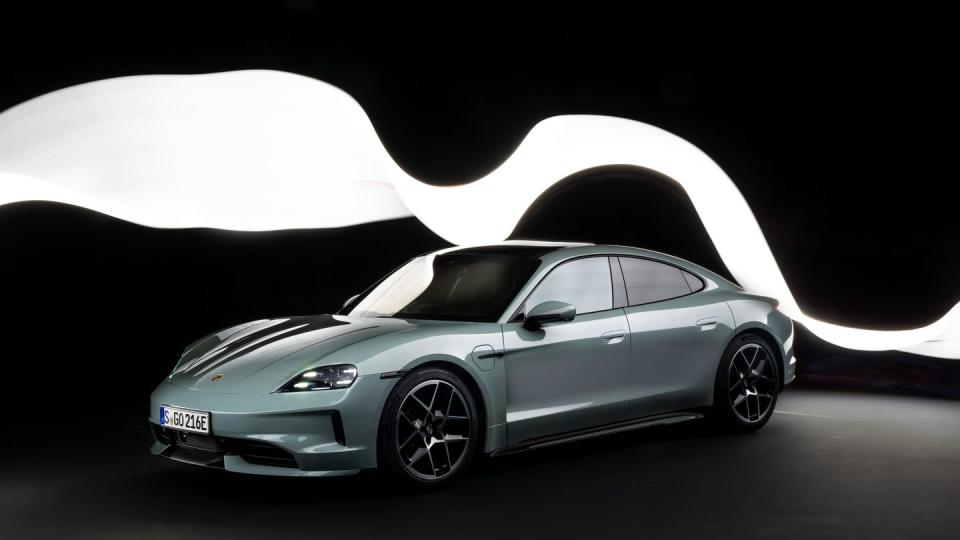
Discussions about sharp-end EVs normally revolve around performance and range.
The Porsche Taycan has always excelled at the first of these—being one of our inaugural Performance EVs of the Year—but has struggled with the second, especially in comparison with more efficient rivals. It is no surprise that Porsche has put serious effort into improving the range of the revised 2025 Taycan. Don’t worry, though—Porsche is still Porsche, and the new car will also be considerably quicker.
Given R&T’s priorities, we will start with the performance improvements. The standout headline is that the range-topping Taycan Turbo S is now set to have up to 938 hp and 808 lb-ft of torque. Those numbers aren’t quite a match for electro-muscle cars like the Tesla Model S Plaid (1020 hp and 1050 lb-ft) or the Lucid Air Sapphire (1234 hp and 1430 lb-ft), but the revised Turbo S does have 188 hp more than its predecessor. Porsche claims that this, along with smarter traction-control algorithms, has taken a full 0.3 second off the Taycan Turbo S’s 0–60-mph time, now reduced to an official 2.3 seconds. As the pre-facelift car delivered a 2.4-second time in independent testing, we presume the reality will be even better.
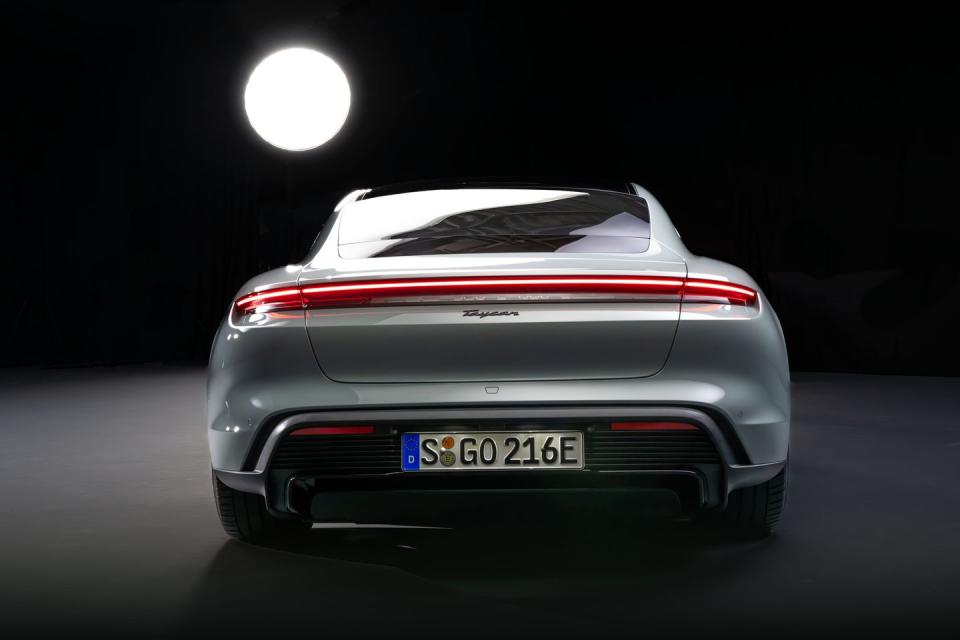
Not that the Turbo S’s headline figure is an always-present one. The basic output is 764 hp, with a new push-to-pass button boosting that to 857 hp for up to 10 seconds. To experience the whole corral of electric horses, a Turbo S driver will need to activate the launch-control function. The result will be a 5050-lb four-seater with acceleration to beat most supercars.
At the other end of the range, the entry-level rear-wheel-drive Taycan keeps the same 402-hp peak output as the first car, but no longer requires launch control to activate that. Porsche claims an even better improvement in acceleration for the rear-driver, which is now capable of dispatching 60 mph in 4.5 seconds, 0.6 second quicker than before.
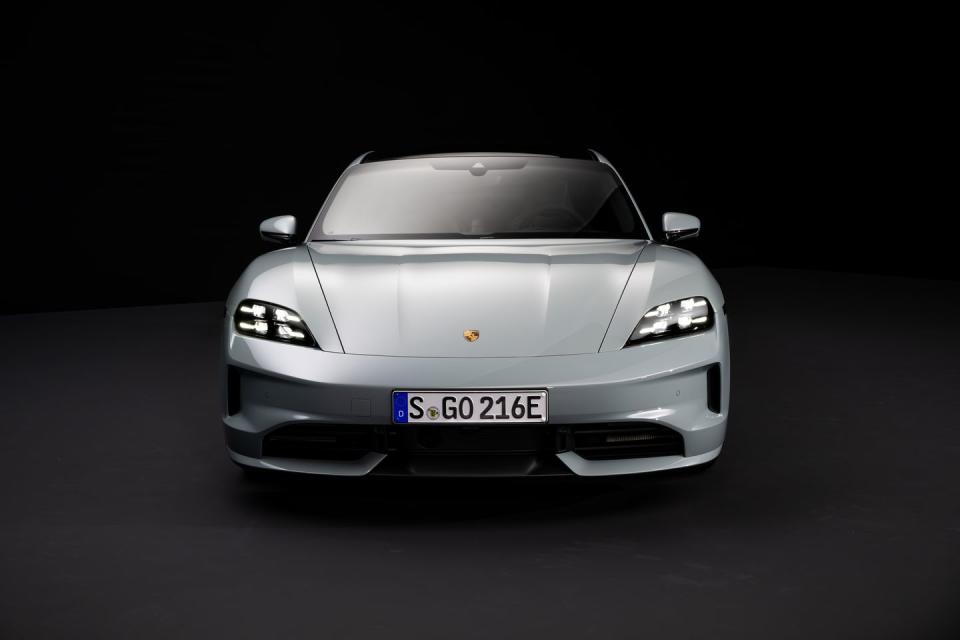
Its exterior design is barely different. The revised Taycan gets flatter standard LED headlamps with correspondingly subtle revisions to fenders and the front bumper. At the rear, the Turbo S gains what initially appear to be vents on the sides of the bumper but, on close inspection, turn out to be fake contoured plastic. For shame, Porsche. (In the company’s defense, the engineers say the shapes do work to perform aerodynamic performance.) Range-topping models will now get an illuminated PORSCHE legend within the full-width rear light bar, and it will also be possible to pay extra for this on cheaper versions. But beyond new wheel designs and paint colors, that’s the limit of the styling tweaks.
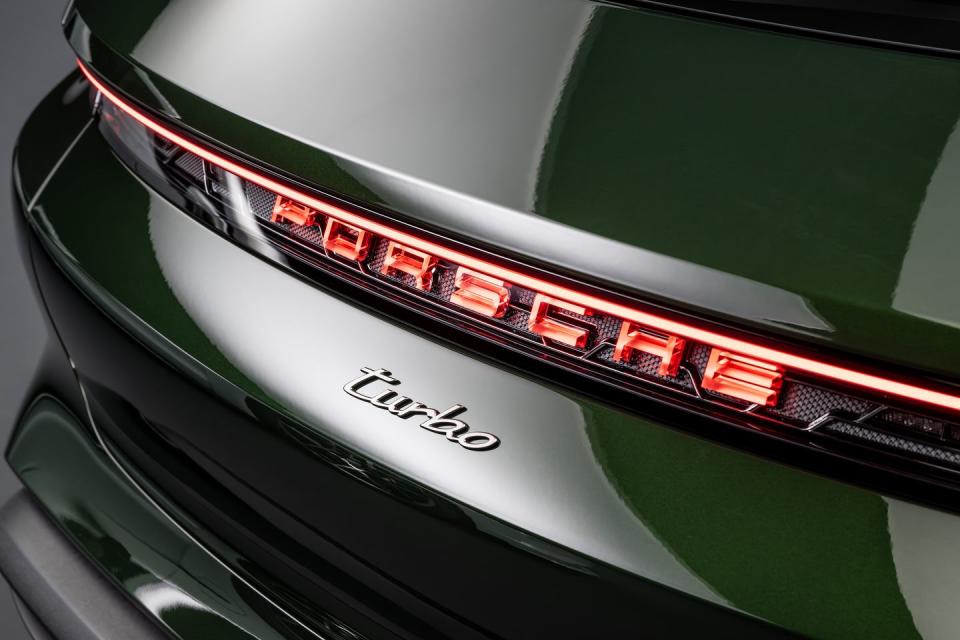
Interior changes are similarly slight. Pricier versions will get a revised passenger display screen with a mono-directional filter, meaning the pixels can be viewed only from head-on (a similar idea to the privacy mesh available for laptop computers). This will, apparently, allow for video content to be legally played while the car is moving, although—unlike in the outgoing triple-screen Taycan—the driver will no longer be able to see anything on the passenger display. Redesigned digital instruments will now show an estimate of the maximum charging speed the battery pack can take in current conditions; there will also be integration with a smarter route-planning app capable of arranging charging stops based on a preferred state of charge. Porsche will also have full integration with the forthcoming Apple CarPlay+, which allows climate functions to be controlled without leaving the system.
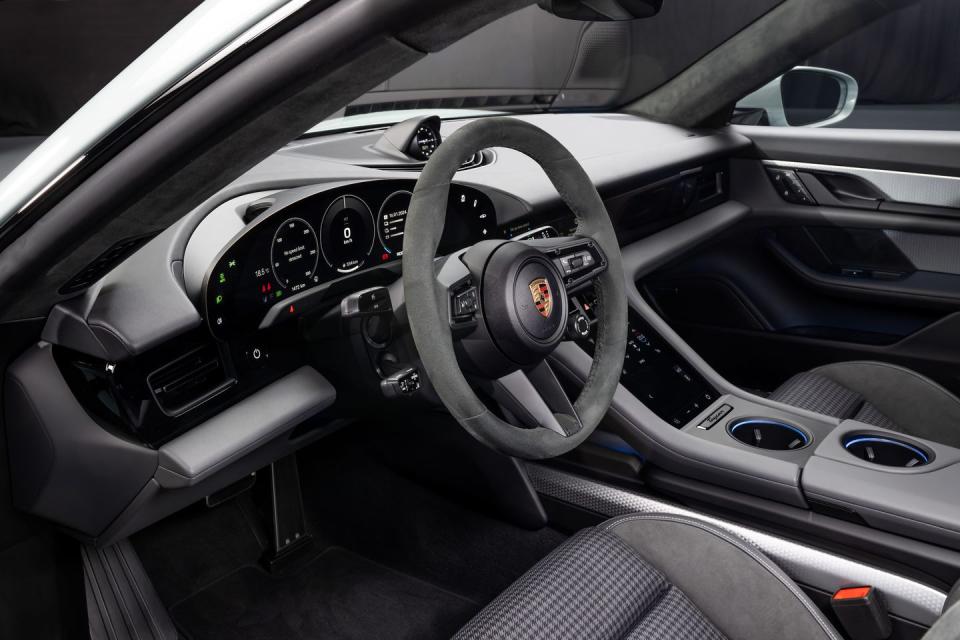
Beneath the surface, significant hardware revisions have taken place. All versions of the 2025 Taycan get new battery packs. The standard pack increases in capacity from 79 to 89 kWh, 83.6 kWh of that being usable—a figure just 0.1 kWh less than the outgoing car’s larger battery pack. The new Performance Plus battery—optional on the rear-drive Taycan and Taycan 4S, and standard on the Turbo and Turbo S—increases total pack capacity to 105 kWh, with 97 kWh usable. Despite that increase, the larger battery weighs 20 pounds less than the one it replaces. All versions of the 2025 Taycan also get a new, lighter rear motor that improves efficiency and still uses a two-speed gearbox to help with higher-speed cruising. Despite additional standard equipment, overall weight has fallen slightly, with the Turbo S now tipping the needle to 5050 pounds on Porsche’s claimed figures.
Porsche has not released EPA numbers yet, but based on Europe’s WLTP figures, the range gains are impressive. In Europe, the rear-drive Taycan with the larger battery is now rated for 421 miles of range, a 108-mile improvement on its predecessor, while the Turbo S goes from 290 miles to 391 miles. Official U.S. numbers will be lower, but Car and Driver has already driven a preproduction rear-drive Taycan with the larger battery and reckons it is good for up to 340 miles.
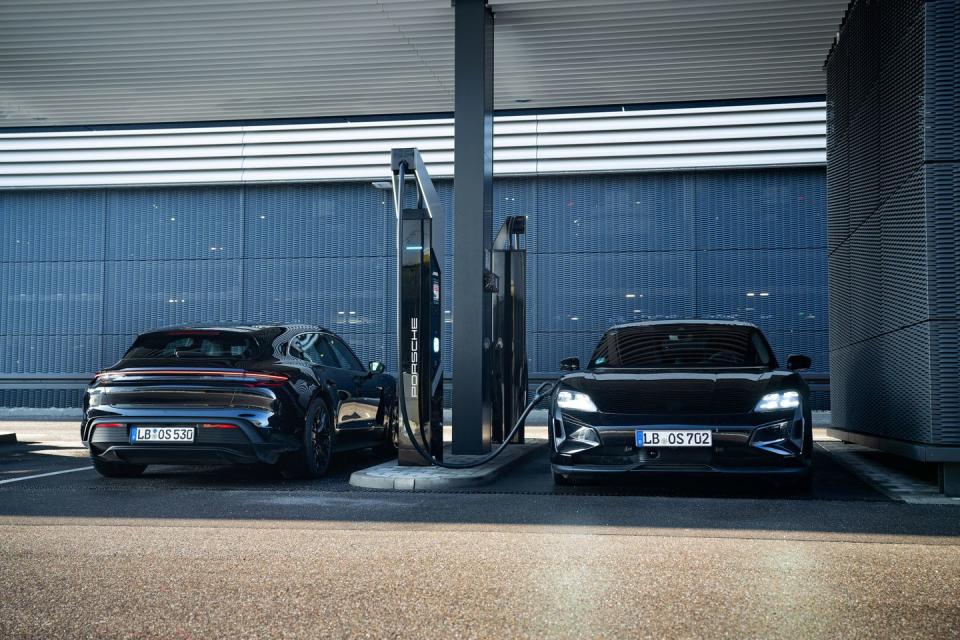
Peak charging speeds have also been upgraded, with the Taycan now able to take DC replenishment at rates of up to a searing 320 kW at a sufficiently potent 800-volt charger. Charging in optimal conditions will see the battery go from 10 to 80 percent in as little as 18 minutes. The battery can also support fast-charging at lower temperatures, and the Taycan will have a 150-kW DC-to-DC converter to help improve speeds on 400-volt chargers. All-wheel-drive Taycans will also be able to support motor regeneration at much higher rates, harvesting up to 400 kW when slowing from higher speeds. Porsche still won’t offer a one-pedal driving mode, reckoning this reduces the purity of the driving experience.
Powertrain aside, the big hardware change is the arrival of standard air suspension for all versions of the Taycan, from the base car upwards, along with two-valve adaptive dampers. Active Ride, an optional anti-roll system, will be offered, replacing the previous Porsche Dynamic Chassis Control. The old system used 48-volt motors to counter lean by applying torque to its anti-roll bars; the new one is electrohydraulic, using an 800-volt pump that can send pressure to each corner of the car. That means an Active Ride–equipped Taycan can reduce roll yet also compensate for pitch under acceleration and dive under braking. It will also offer a “curve tilt” function that will lean the Taycan into a turn like a bicycle, similar to the Curve mode that Mercedes offers with its own electrohydraulic anti-roll system.
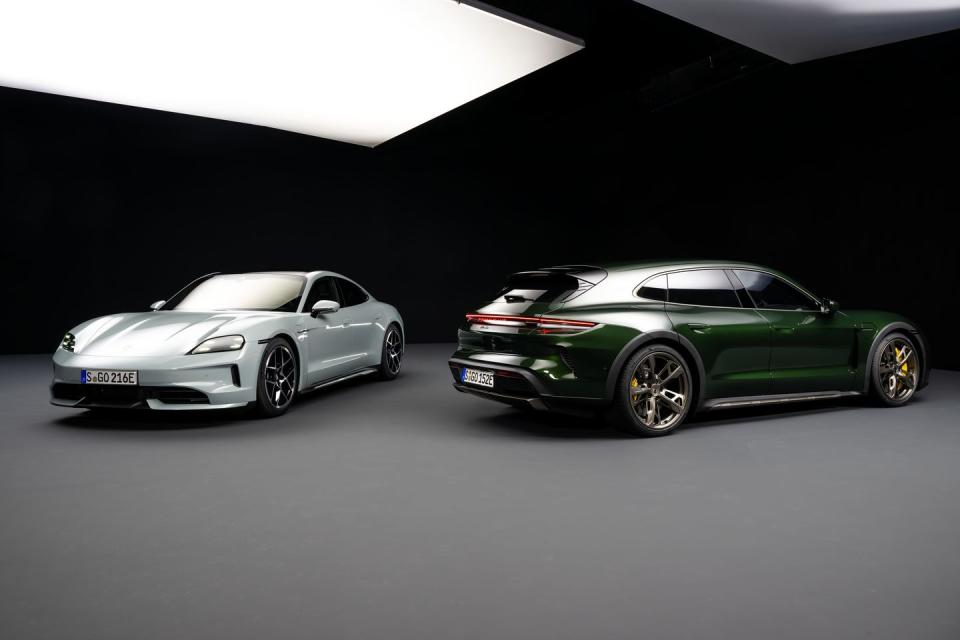
Both the Taycan sedan and the station-wagon-ish Cross Turismo will continue, although the rear-drive powertrain will be offered only with the sedan. Porsche has confirmed the existence of 4S, Turbo, and Turbo S variants but not whether the GTS will get a second generation. Alongside range and performance, prices have also risen, with the range now stretching from the $101,395 Taycan RWD to the $213,695 Taycan Cross Turismo Turbo S. The sedan will reach the U.S. in the summer, and the Cross Turismo will follow in the fall.
You Might Also Like

 Yahoo Autos
Yahoo Autos 